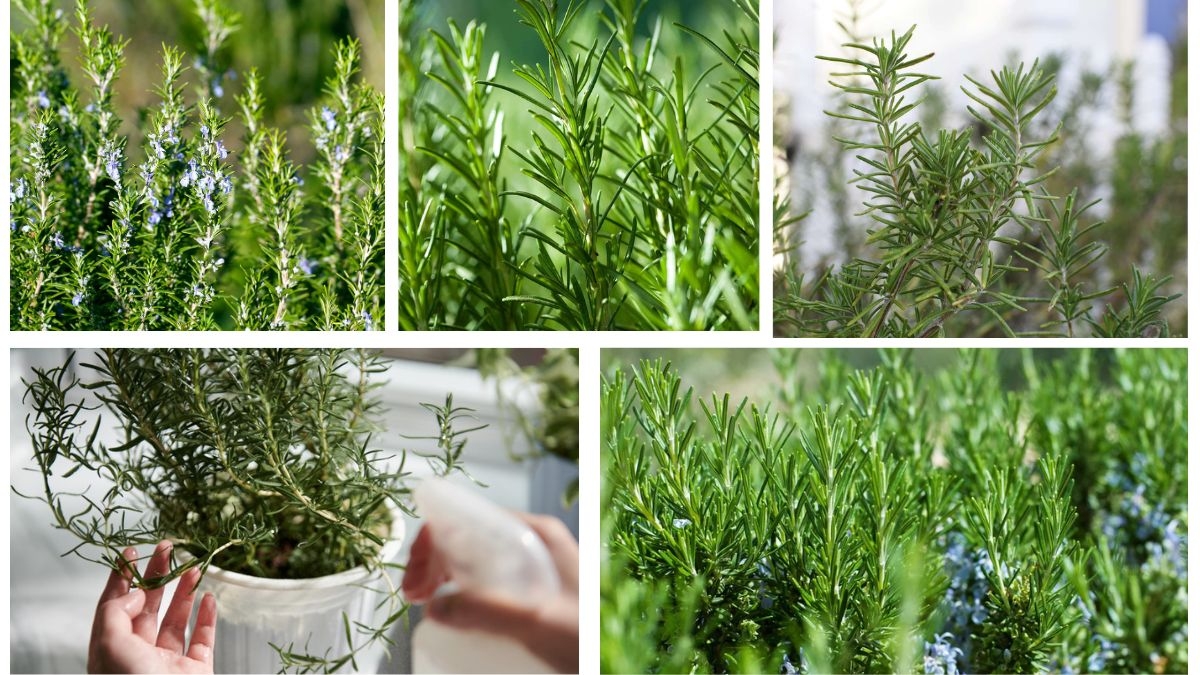Rosemary (Rosmarinus officinalis) is a popular evergreen herb native to the Mediterranean region, prized for its fragrant needle-like leaves, ornamental beauty, and culinary uses. Apart from flavoring dishes like roasted meats, breads, and stews, rosemary offers medicinal and aromatic benefits, making it a cherished addition to home gardens, patios, and kitchens worldwide.
However, growing a healthy rosemary plant requires a good understanding of its watering needs. While rosemary is relatively hardy and drought-tolerant, improper watering is one of the most common reasons this plant struggles in home settings. So, how often should you water a rosemary plant? The answer depends on several factors such as climate, soil type, container size, and whether the plant is grown indoors or outdoors.
This comprehensive article explores rosemary’s ideal watering routine, signs of overwatering and underwatering, best watering practices, seasonal adjustments, and practical tips to help you maintain a thriving, lush rosemary plant throughout the year.
Understanding Rosemary’s Natural Habitat

Before delving into watering specifics, it’s essential to consider rosemary’s native environment. Rosemary originates from the coastal areas of the Mediterranean, where it naturally thrives in:
- Sandy, well-drained soils
- Warm, dry climates
- Infrequent but deep rainfall
In these conditions, rosemary has evolved to become drought-tolerant and susceptible to root rot if left in soggy soil. This natural adaptation is the key to understanding how to water rosemary properly in modern home and garden environments.
How Often Should You Water a Rosemary Plant?

General Watering Guidelines
A good rule of thumb for watering rosemary is:
- Water deeply when the top 1 to 2 inches of soil are dry.
- Then, allow the soil to dry out completely before the next watering.
Depending on your environment, this usually translates to:
| Plant Location | Watering Frequency |
|---|---|
| Outdoor, in-ground | Every 7–14 days |
| Outdoor, in container | Every 5–7 days in summer, less in winter |
| Indoor plant | Every 7–10 days |
Remember: these are average recommendations, and actual watering needs will vary based on climate, season, and plant size.

Factors Affecting Rosemary’s Watering Needs
1. Climate
- In hot, arid regions, rosemary requires more frequent watering.
- In cooler or humid climates, soil retains moisture longer, so less frequent watering is needed.
2. Soil Type
- Rosemary grows best in light, sandy, or loamy soil with excellent drainage.
- Clay-heavy or compacted soils hold water, increasing the risk of overwatering.
Tip: Amend soil with sand or perlite to improve drainage.
3. Container Size and Type
- Smaller containers dry out faster.
- Terracotta pots are more breathable and allow quicker moisture evaporation compared to plastic containers.
Always ensure pots have sufficient drainage holes.
4. Season
- Spring and summer: Increased watering during active growth.
- Fall and winter: Reduce watering, as rosemary grows slowly and requires less moisture.
How to Know When Rosemary Needs Water

The easiest way to determine when to water rosemary is by checking the soil moisture. Here are reliable methods:
Finger Test
Insert your finger about 1–2 inches into the soil:
- If it feels completely dry, it’s time to water.
- If it’s still slightly moist, wait another day or two before checking again.
Visual Signs of Thirsty Rosemary
- Drooping or wilting leaves
- Dry, brittle leaf tips
- Soil pulling away from the sides of the pot
- Leaf discoloration (greyish-green leaves)
Risks of Overwatering Rosemary

Despite being drought-tolerant, rosemary is highly sensitive to excessive moisture. Overwatering can cause:
Root Rot
When soil remains wet, rosemary’s roots lack oxygen, leading to decay and fungal diseases.
Fungal Growth
Constantly moist conditions encourage fungal diseases like mildew and rust.
Signs of Overwatering
- Yellowing leaves
- Wilting despite wet soil
- Mushy, discolored roots (if checked)
- Musty odor from soil
If overwatering occurs, it’s important to:
- Remove the plant from its container.
- Trim any rotten roots.
- Repot in fresh, dry, well-draining soil.
Best Watering Practices for Rosemary
To keep your rosemary healthy, follow these expert-backed practices:
1. Water Deeply but Infrequently
Soak the soil thoroughly until water runs out of the drainage holes. Avoid light surface watering, which encourages shallow root growth.
2. Use Room-Temperature Water
Cold water can shock the plant’s roots. Let water sit for a few hours to reach room temperature before use.
3. Morning Watering
Water rosemary in the early morning. This ensures any splashed water on leaves dries by evening, reducing the risk of fungal issues.
4. Ensure Proper Drainage
Whether grown indoors or outdoors, rosemary should never sit in waterlogged soil. Use well-draining soil and remove excess water from saucers after watering.
5. Mulching (for outdoor plants)
A light layer of organic mulch like straw or shredded bark conserves moisture and suppresses weeds without suffocating the soil.
Seasonal Watering Adjustments
Spring
- Increase watering as temperatures rise and new growth appears.
- Check soil every 5–7 days.
Summer
- Water more frequently, about once or twice per week, depending on heat and wind.
- Potted plants may need daily checks in very hot, dry climates.
Fall
- Reduce watering as growth slows.
- Check soil every 7–10 days.
Winter
- Rosemary requires minimal water during dormancy.
- Water only every 2–3 weeks for indoor plants.
- For outdoor plants in frost-free regions, water during prolonged dry spells.
Common Rosemary Watering Mistakes
Avoid these common errors to maintain a healthy rosemary plant:
1. Overwatering
Too much water is a leading cause of rosemary decline. Allow soil to dry thoroughly between waterings.
2. Sticking to a Strict Schedule
Instead of watering on a rigid timetable, observe your plant and soil conditions.
3. Using Heavy, Moisture-Retaining Soil
Dense, waterlogged soil leads to root rot. Use a gritty, well-draining mix.
4. Ignoring Seasonal Changes
Adjust your watering routine with seasonal weather fluctuations.
Conclusion
In conclusion, rosemary prefers deep, infrequent watering with dry spells in between, mimicking its native Mediterranean conditions. The exact watering frequency depends on factors such as:
- Climate and humidity
- Soil drainage
- Container size and material
- Seasonal changes
As a general guide:
- Outdoor, in-ground rosemary: Every 7–14 days
- Outdoor, potted rosemary: Every 5–7 days in summer, less in winter
- Indoor rosemary: Every 7–10 days, adjusting for room conditions
The most reliable method is to check the soil moisture and water when the top 1–2 inches are dry. By following these guidelines, your rosemary plant will thrive — rewarding you with aromatic leaves for cooking, crafting, and natural health remedies throughout the year.





Leave A Comment